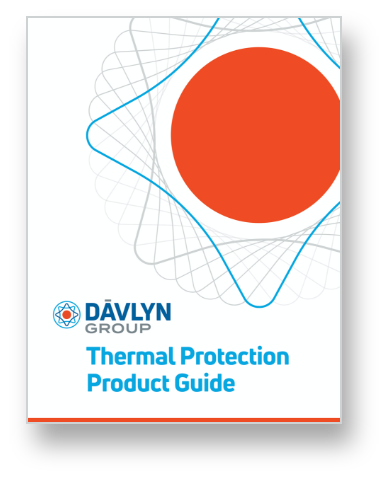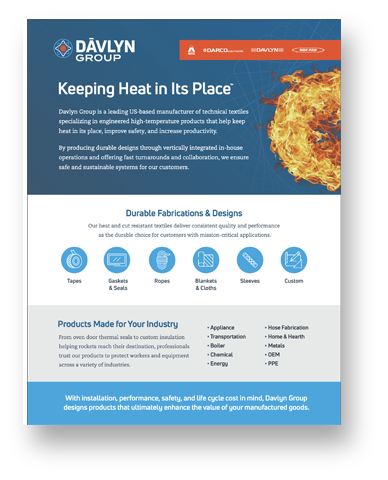What Are Pyrolytic Ovens?
Steam cleaning and pyrolytic ovens have revolutionized how the average consumer cleans their oven. Because self-cleaning ovens are so convenient, many people choose to purchase pyrolytic ovens over traditional ovens. This means that ovens need more high-quality insulation than ever before. In order to reach the high temperatures required for a pyrolytic oven, the gaskets must be able to seal the oven door tightly and safely. Oven door gasket design must become more efficient and high-tech as the demand for pyrolytic ovens rises.
What Does a Pyrolytic Oven Do?
Pyrolytic comes from the words “pyro” and “lysis,” which mean “fire” and “loosen”—a fitting term for a self-cleaning oven. How do self-cleaning ovens work, exactly? A pyrolytic oven uses extremely high temperatures, around 900 to 1000 degrees Fahrenheit (482 to 538 degrees Celsius), to self-clean by burning debris left on the inside of the oven. The oven runs at this high temperature for a set amount of time. Once the programmed time is completed, usually between 2 to 4 hours, the oven begins to cool down. After the oven is cool, you can open the oven and see that the debris has turned to a thin layer of ash that can then be easily wiped away with a damp sponge or microfiber cloth.
What Are the Pros & Cons of Pyrolytic Ovens?
There are many pyrolytic oven pros and cons, but the pros often outweigh the cons for several reasons. Owners of pyrolytic ovens save time and effort on cleaning their appliance because they don’t have to spend countless hours scrubbing the inside of ovens and creating a greasy mess. Pyrolytic ovens also eliminate the use of toxic cleaning chemicals for greater health and safety benefits. As far as the oven itself goes, pyrolytic ovens require more insulation to reach the high temperatures needed for their self-cleaning functions, which makes them more energy efficient as well.
Because they are advanced appliances that require specific engineering to reach extreme temperatures, pyrolytic ovens tend to be more expensive than catalytic ovens and other types of ovens. The long self-cleaning process may also be a con for some users, but a good pyrolytic oven is often a very smart investment. Many pyrolytic ovens have different cleaning modes or programs that allow users to choose what level of residue they need cleaned and thus how long they’d like the oven locked for self-cleaning.
What Is a Steam-Cleaning Oven?
A steam-cleaning oven uses the same basic premise that a pyrolytic oven does except with water added to the process. The oven is heated to 250 degrees Fahrenheit (121 degrees Celsius) and produces steam that helps to break down the debris left inside the oven. The cleaning cycle runs for an hour or less, and when the oven cools, the inside can be wiped out with a sponge or microfiber cloth. Steam-cleaning ovens cut down on clean time and require less energy than pyrolytic ovens that use heat to break down debris, but self-cleaning ovens are better for users that want to run fewer cleaning cycles and remove greater amounts of buildup.
What Is a Pyrolytic Oven vs. Catalytic Oven?
Catalytic ovens have walls lined with a chemically treated, rough, and porous material that is effective at catching grease. When the oven is heated to around 400 degrees Fahrenheit (204 degrees Celsius), the debris is oxidized and destroyed. After cooling, the oven walls need to be manually washed with soapy water. A pyrolytic oven heats to much higher temperatures than a catalytic oven to eliminate food grime with a deep cleaning that leaves only an ash residue easily swept away, but it does have longer cleaning cycles and is more expensive for the consumer. Unlike pyrolytic ovens, catalytic ovens self-clean faster but will not break down sugars and require full replacements of their chemically treated walls every five years.
How Do You Install or Replace an Oven Door Gasket?
Many pyrolytic oven door gaskets like Davlyn Group’s proprietary clip gasket or wireform clip attachment method allow for quick and easy installation and replacement. Well-designed gaskets like these ensure secure mounts while accommodating oven door radii and structural anomalies. You can utilize a universal oven door gasket, a custom option, or even a continuous piece with integral terminations or mounted on an internal custom wire frame to install or replace seals.
Davlyn Group oven door gaskets or seals are high-temperature products utilized by the world’s leading manufacturers of standard and professional-style ranges, including makers of pyrolytic ovens and catalytic ovens. They function as the perfect sealing solution for commercial, residential, and industrial ovens and dryers, boilers, and industrial furnaces.
Contact us to learn more about our high-quality oven door gaskets and how they can make the perfect fit for your next pyrolytic oven application.



